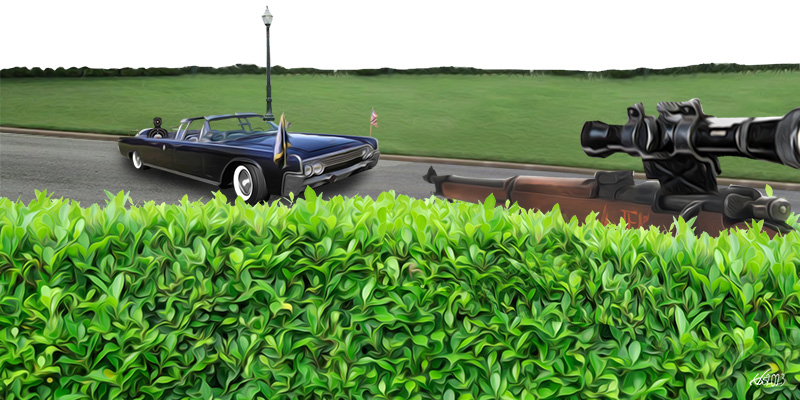On April 22, Johannesburg-based Kenyan photographer, Cedric Nzaka, took to Twitter to share his latest conquest. He had shot the cover for South Africa’s Cosmopolitan magazine, featuring Miss Universe, Zozibini Tuni. It was a big deal. Much as Nzaka has worked with various luxury brands over the years, ranging from Vogue to Nike and Netflix, this was his first-ever magazine cover. As he received adulation, Nzaka’s feat quickly morphed from being the guy who shot the latest Cosmopolitan cover to being one who did the magazine’s last cover.
On April 30, Associated Media Publishing, South Africa’s franchise holder for Cosmopolitan, announced that after a four-decade run, the company was permanently closing its doors on May 1, and ceasing publication of all its magazines, including House & Leisure, Good Housekeeping and Women On Wheels, due to the financial crunch brought about by COVID-19. And so, just like that, several editors, writers, photographers, designers, stylists and other production support staff became jobless.
Ordinarily, Nzaka and those like him who are contracted by high-end clients on a need-to-basis may have the privilege of having potential clients lurking in the shadows, but not with COVID-19 in the picture. With event cancelations and a lull in advertising, there is not much work for commercial photographers. For writers and editors, it means going freelance, a not-so-easy ballgame for those accustomed to structured work regimes and timely paychecks. It means sending pitches with no guarantee of being commissioned, an exercise which requires thick skin due to the deluge of rejections accompanying this new reality. Presently, things look bleaker with numerous international publications deciding to no longer engage freelancers.
It wasn’t only glossy magazines that took a hit. The Mail and Guardian (M&G), one of Africa’s better known newspapers, found itself in a tight spot too. On March 27, the editor-in-chief, Khadija Patel, the deputy editor, Beauregard Tromp, and the Africa editor, Simon Allison, led the newsroom in appealing to readers on Twitter to subscribe to the paper. They weren’t sure they would afford to pay salaries in the coming months. Moving with speed to innovate, they launched The Continent, a digital newspaper reporting on Africa that is distributed through email and WhatsApp, a move aimed at growing regional readership and opening up future revenue streams. Then, on May 9, Patel and Tromp pulled a surprise move by resigning as editor and deputy editor, prompting speculation that their departure may be the outcome of the current financial ripples.
As Ferial Haffajee, former editor-in-chief of the M&G and later City Press writes in the Daily Maverick about her conversations with Patel, it wasn’t the first time the paper was in need of support from its readership. Thirty-two years ago, the M&G made an almost similar call to the public.
“Near her office is a 1988 poster of the first Weekly Mail (the M&G’s original name) when then editors Anton Harber and Irwin Manoim ran a campaign called Save the Wail,” Haffajee writes of her visit to Patel’s M&G office. “Then Minister of Home Affairs Stoffel Botha threatened to ban the title and on its cover, the paper ran the clarion call ‘DON’T LET US GO QUIETLY’, they asked readers. ‘Carry on reading us. Carry on subscribing. Make a fuss.’”
Patel’s Twitter call for subscriptions delivered an impressive 30 per cent increase in paying readers.
The news business isn’t doing so well in Kenya either. On April 2, Radio Africa Group chairman, Patrick Quarcoo, wrote to employees explaining that while job losses will remain an option of last resort, pay cuts were inevitable, considering that revenue streams were fast drying up. Effective April 1, Quarcoo announced, employees taking home a gross salary of over Sh100,000 will take a 30 per cent cut, while those earning below this amount will have their salaries reduced by 20 per cent. There was a promise that the move (termed interim) will be reviewed periodically.
On April 2, Radio Africa Group chairman, Patrick Quarcoo, wrote to employees explaining that while job losses will remain an option of last resort, pay cuts were inevitable, considering that revenue streams were fast drying up.
And even though it had already effected pay reductions, the Nation Media Group clarified on July 1 that salary cuts will last until December 2020 – this while breaking the news that starting July 3, a chunk of its workforce will be immediately relieved of its duties.
Earlier on, on March 12, the Standard Group’s Orlando Lyomu sent an internal memo on the impending laying off of 170 employees, a purge staggered over a few months.
However, it was the reduction in earnings by between 20 per cent and 50 per cent at the Mediamax Network that caused a frenzy, leading to resignations and court action. There was temporary relief until the morning of June 22, when over 100 staffers woke up to text messages declaring their roles redundant.
The “infodemic”
With the advent of COVID-19, there was a warning by the World Health Organization (WHO)’s director general, Dr Tedros Adhanom Ghebreyesus, that as the pandemic rears its ugly head, it has a notorious twin in an ongoing “infodemic” – a flood of misinformation. It was, therefore, upon journalists to take the lead in educating the public in a bid to “flatten the curve”.
This announcement resulted in a deluge of infographics, explainers, think pieces and interviews with epidemiologists and other public health practitioners. As governments articulated their responses in war-time lexicon, it was journalists who stepped in and cut out the militarism by being on message about the sorts of individual and communal mitigation measures that were needed to curb the virus. It was journalists who covered newsworthy occurrences that could have been overshadowed by COVID-19, including police violence on the pretext of containing the virus.
It was therefore expected that when the dusk-to-dawn curfew took effect in Kenya, journalists were listed as essential service providers, and were permitted to move around past 7 p.m. and to travel in and out of areas where cessation of movement was enforced.
However, the recent expulsion of journalists from newsrooms makes one wonder whether they are still considered essential service providers. A major concern has been the disconnect between media top dogs and their juniors, with bosses proving that all they need is a flimsy excuse for them to throw their colleagues under the bus.
As governments articulated their responses in war-time lexicon, it was journalists who stepped in and cut out the militarism by being on message about the sorts of individual and communal mitigation measures that were needed to curb the virus.
In his piece, “Newsrooms are in revolt, the bosses are in their country homes”, New York Times columnist Ben Smith juxtaposes the realities of the lives of journalists against those of their bosses, where after COVID-19 hit, top media executives retreated to their out-of-town residences with swimming pools and access to golf courses, while reporters who do the donkey work, were left in limbo. Those lucky not to have lost their jobs suffered a massive pay reduction or were furloughed. They remained stuck in the city, unsure of whether their paycheck-to-paycheck existence would sustain them during and after the pandemic.
Smith should know a thing or two about income and other disparities within newsrooms, having himself been the editor-in-chief of BuzzFeed. By shining a light on the opulent lifestyle of those who occupy the higher echelons of journalism (which he himself enjoys, courtesy of his position and income), he is by extension self-indicting in what seems to be the new era of accountability in media and other industries.
“Churnalism”
In their defence, media bosses always play the redundancy card whenever they need to deploy the axe. One may wonder: how does a newsroom become redundant?
In “The slow death of modern journalism” published in The Tribune, an anonymous reporter recounts the travails of working in modern-day newsrooms, where productivity has now been reduced to how many shallow clickbait articles one is required to produce per day for the benefit of advertisers.
“This was the state of journalism before the coronavirus upended our lives, and it is still the state of the journalist in a time of global crisis,” anonymous reporter wrote. “A handful of reporters, probably those you follow on social media, have the time and luxury to produce work in the public interest while many of us, not for want of ambition or ideas, spend our time pumping out rubbish in the knowledge that we can be spiked at a moment’s notice.”
In his 2008 book, Flat Earth News, the investigative journalist Nick Davies called this practice “churnalism” – a reference to the quantity and quality of work reporters are expected to produce. According to anonymous reporter, churnalism means rehashing content from other platforms that broke the story earlier so that reporters don’t need to leave their desks to produce five pieces a day.
When they see their staff as agents of churnalism as opposed to journalists doing intellectual heavy-lifting, media bosses find it easy to declare them redundant when the opportunity arises. The irony is, it is the same bosses who devise visions for churnalism. With productivity reduced to the bare minimum, staffers become redundant by design from the word go; their being on the payroll appears like an act of benevolence.
Yet media bosses don’t act on their own; behind them are media owners, the majority of whom care about nothing but the bottom line. These ownership intricacies and the cloud of terror hovering over newsrooms, courtesy of profit-by-all-means proprietors, is possibly best captured by Savannah Jacobson, a Columbia Journalism Review (CJR) Delacorte Magazine Fellow. In a piece on the New York hedge fund Alden Global Capital’s takeover of nearly 200 newspapers and resultant cuts, Jacobson terms the fund “the most feared owner in American journalism”. The article exposes how investors’ lives are “punctuated by summer trips to Luxembourg and the French Riviera”, while “pens and notebooks disappear from newsrooms” due to low budgets.
When they see their staff as agents of churnalism as opposed to journalists doing intellectual heavy-lifting, media bosses find it easy to declare them redundant when the opportunity arises.
Using the example of the East Bay Times, which won a 2017 Pulitzer Prize for Breaking News Reporting, Jacobson illustrates how regardless of how many journalistic highs a newsroom attains, hedge funders, who are not interested in journalism and only care about how much money they can squeeze out of the industry, go ahead to purge newspapers – as if achievement should be rewarded with punishment. Over a two-year period, more than half the employees were sent packing as the hedge fund works even harder to acquire stakes in more newspapers.
“Winning a Pulitzer Prize doesn’t change the economics of the company,” said the East Bay Times’s executive editor, Neil Chase, “so why would it change the attitude of the owners?”
A “media extinction event”
As COVID-19 unraveled, there was an increase in think pieces on the financial and other dangers faced by newsrooms in Africa and elsewhere. Writing in The Guardian, journalist Kaamil Ahmed references the feasibility study for the establishment of an International Fund for Public Interest Media (IFPIM) conducted by media philanthropy Luminate, which warns that COVID-19 could be a “media extinction event”. Even before the pandemic, Luminate was pushing for the creation of the IFPIM so that media independence and sustainability is guaranteed, especially during turbulent times such as these, without profit-making being the sole consideration.
“The news media needs to be reclaimed as a public good,” Ahmed quotes former M&G editor-in-chief Khadija Patel, who also serves as vice chairperson of the International Press Institute. “It should not be seen as the playground of a few billionaires. The saddest sign would be for us to emerge from this pandemic with a handful of billionaires controlling all of our news.”
Revisiting his tenures as editor of the Cape Angus and the Cape Times, South African journalist Gasant Abarder opines that COVID-19 is the final straw that broke the newspaper industry’s already breaking back. Abarder, who says that he has watched print media slowly go to the dogs over a 17-year period, lays the blame on non-responsive editors and owners who did not pay attention and did not move speedily to innovate with the arrival of online classified sites such as OLX, followed by the exponential growth of social media. Abrader laments the edging out of older, more seasoned hands in exchange for a younger lot who may be talented but who “are paid less to do far more. They must tweet, shoot videos and come back to the office to write a few stories”. He believes that news organisations still need a few grey heads with institutional memory on their payrolls.
“But the newspapers that grew their circulation were owned by the people who knew this was a long play and that investment in quality journalism brought rewards,’’ he writes. “Look at The New York Times, The Washington Post and the Evening Standard. They invested in quality journalism and are now seeing the rewards after just a few years. The Evening Standard became a free paper to commuters on the London Underground. With guaranteed eyeballs, 650,000 copies were put in the hands of the commuters and advertising yields went through the roof.”
Apart from adapting to the changing times, Abrader makes a strong case for good storytelling. He gives examples of specific interventions he resorted to in trying to salvage what was already a dwindling newspaper when he was recalled as editor to do the firefighting. Not keen on selling the previous day’s events as news, he made a deliberate attempt to introduce powerful reporting, including covering the homelessness crisis in Cape Town extensively, going as far as letting a street dweller write the cover story, and allowing students to edit the paper during the #FeesMustFall protests. He admits that this and other efforts came too little too late. By the time he was leaving in 2016, the Cape Angus had only 10 employees, including Abrader himself, down from 57 staffers in 2009 when he first worked at the paper.
Why we do what we do
Accepting his position as acting editor-in-chief for the Mail and Guardian following Khadija Patel’s exit, investigative environment reporter, Sipho Kings, wrote about the cost of producing impactful journalism, coverage which isn’t always considered sexy at the time of writing and publishing. Paying tribute to those he says are willing to fund journalism as a public good, Kings referenced the M&G’s own history, where in the early days, reporters mortgaged their homes to fund the operation. That was before The Guardian stepped in, after which the non-profit Media Development Investment Fund bolstered things, with employees owning 10 per cent of the company.
“There are few newsrooms that take this kind of reporting seriously,” Kings wrote regarding his coverage of climate change, and how unfashionable it was at the beginning. “The M&G is one of them. It costs money to send skilled reporters and photographers to remote areas. It takes bravery to put those stories on the front cover of the newspaper — I am frequently reminded that one of the worst-ever selling editions of the M&G had a climate change story on the cover.”
Yet, much as it is desirable, journalism isn’t strictly about whether the work results in the sale of thousands of newspaper every morning or having stories trending on Twitter, which ties to the fact that it also isn’t about blind profiteering. In exercising oversight, journalism will from time to time be the bearer of unpopular opinions, or find itself alone in championing news causes such as climate change, which take a long time to become popular. In these lonely and sometimes dark streets of pioneering coverage, journalists remain true to their vocation, sometimes paying the ultimate price with their lives and livelihoods. It therefore beats logic that these individuals should be the first to be sacrificed at the altar of capitalism.
In light of the foregoing chaos and confusion, two media initiatives at the Columbia Journalism School – the Columbia Journalism Review (CJR) and the Tow Center for Digital Journalism – have come together to set up The Journalism Crisis Project, in an effort to make sense of things. Their statement reads:
Today, CJR and Tow are launching The Journalism Crisis Project, to add to the existing research. Since the economic effects of the coronavirus became clear in March, we’ve been compiling and updating a database on losses throughout journalism – tallying layoffs, furloughs, salary cuts, closings and other effects of the journalism downturn. So far, we’ve tracked more than 700 entries of reported changes at hundreds of publications. Our hope is that these efforts, in tandem with our colleagues outside of Columbia, will provide all of us with a baseline of reliable data. From that, we can then begin to understand where we go next…Such work will inevitably raise difficult questions. Are print newspapers worth saving? Is public rescue money a good idea? What should be the limits of philanthropy? How do we rebuild a diverse industry that finally looks like the country? As tough as such questions will be, they are the first steps towards finally addressing our growing problem – which, as with so many others right now, might finally put our old, damaged status quo to rest.
As fear and apprehension whirls around newsrooms, driving journalists to question whether they and their work matter, I have found reassurance in the reflections of the journalist April Zhu, who recently wrote me a note on why we do what we do, which I partially relay below.
“In Chinese, the word for journalist is 记者 (jì zhe). The zhe just means “person.” Jì means a lot of different things, but among them: remember, record (the verb), record (the noun), even to jot down. I think the word ‘journalist’ is ruined in so many people’s minds; I think the kind of journalism that I do is different to yours, and what we do is almost a totally different profession than what TV broadcasters and pundits do. But there is something about this simple word that reduces our work to its most basic unit: to remember. To record. To take notes. You could say (though a Chinese person would laugh at this) that a jizhe is a ‘remember-man.’
“I was talking to one of my friends (also a journo) last week about the new surge of interest around police brutality, and he was expressing, quite honestly, that it frustrates him that people are only paying attention now, and that journalists covering it now are getting assignments – when he’s been covering this for a long time, and no one paid attention. This is a core tension of our work, kind of like surfing: do you have control over the wave, or are you simply struggling to stay upright, subject to its whims? I sense that you ask yourself this a lot.’’
“What you cover is never ‘hot’, or at least by the time your careful, studied analyses come out, it is no longer ‘hot.’ But you tell the story, and you tell it beautifully. And, once you have told it, it is record. It is part of the archive, forever. Us journalists have a complicated relationship with time and the public, which often leaves us feeling unvalued. But the archive is eternal, the archive is a time machine. Never mind those small feedback loops, whether or not a piece goes viral. The essence of our work is to remember, and that is a long process. That is a process that cannot take place without the archive, because the archive is what people across space and time will return to, almost timelessly. That is the magic of remembering.”
–
Reporting supported by a micro-grant from Baraza Media Lab.








